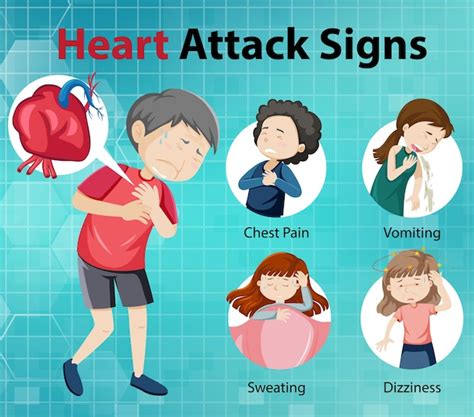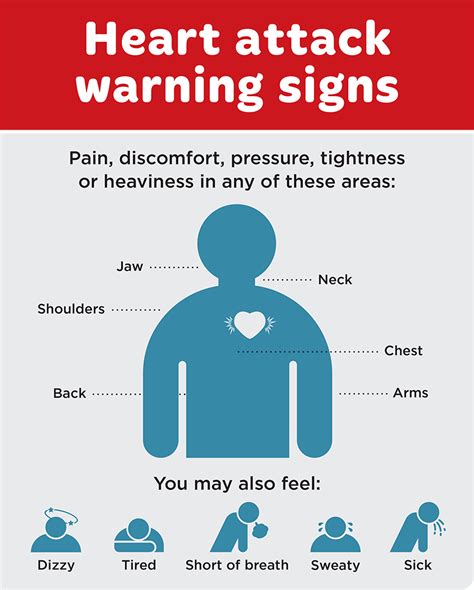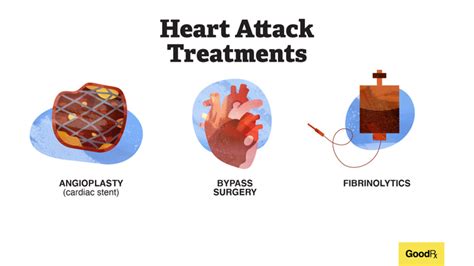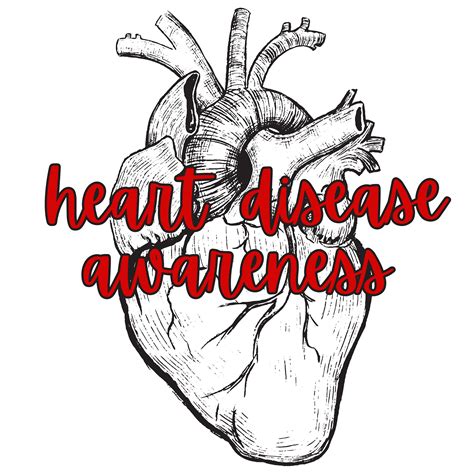Intro
Heart attacks are a leading cause of death worldwide, and while they are often associated with men, women are also at risk. In fact, according to the American Heart Association, heart disease is the number one killer of women in the United States, causing one in three deaths. Despite this, many women are unaware of the symptoms of a heart attack and may not recognize the warning signs. This lack of awareness can lead to delayed treatment and increased risk of complications or death.
The importance of recognizing heart attack symptoms in women cannot be overstated. Unlike men, who often experience classic symptoms such as chest pain and shortness of breath, women may experience more subtle symptoms that can be easily mistaken for other conditions. For example, women may experience pain in the arms, back, neck, jaw, or stomach, as well as fatigue, lightheadedness, or nausea. These symptoms can be so mild that they are often dismissed as stress or anxiety, rather than a potentially life-threatening condition.
It is essential to educate women about the symptoms of heart attacks and the importance of seeking medical attention immediately if they experience any of these symptoms. By recognizing the warning signs and taking prompt action, women can reduce their risk of complications and death from heart attacks. In this article, we will explore the symptoms of heart attacks in women, the risk factors, and the steps that can be taken to prevent and treat heart disease.
Understanding Heart Attack Symptoms in Women

Heart attack symptoms in women can be different from those experienced by men. While chest pain is still a common symptom, women are more likely to experience other symptoms, such as pain in the arms, back, neck, jaw, or stomach. They may also experience fatigue, lightheadedness, or nausea, which can be mistaken for other conditions. It is essential to recognize these symptoms and seek medical attention immediately if they occur.
Risk Factors for Heart Attacks in Women
The risk factors for heart attacks in women are similar to those for men and include:- High blood pressure
- High cholesterol
- Diabetes
- Smoking
- Obesity
- Family history of heart disease
- Age (risk increases with age)
However, women are more likely to experience certain risk factors, such as:
- Hormonal changes during menopause
- Pregnancy complications, such as preeclampsia
- Autoimmune disorders, such as rheumatoid arthritis or lupus
Recognizing the Warning Signs of a Heart Attack in Women

The warning signs of a heart attack in women can be subtle, but it is essential to recognize them and seek medical attention immediately. These symptoms may include:
- Chest pain or discomfort
- Pain in the arms, back, neck, jaw, or stomach
- Shortness of breath
- Fatigue or weakness
- Lightheadedness or dizziness
- Nausea or vomiting
- Cold sweats
- Pale or blue-tinged skin
If you experience any of these symptoms, call emergency services immediately. Do not delay or try to drive yourself to the hospital.
Preventing Heart Attacks in Women
Preventing heart attacks in women requires a combination of lifestyle changes and medical interventions. Some steps that can be taken include:- Eating a healthy diet low in saturated fats and high in fruits and vegetables
- Engaging in regular physical activity, such as walking or swimming
- Maintaining a healthy weight
- Quitting smoking
- Managing stress through techniques such as meditation or yoga
- Getting enough sleep
- Monitoring blood pressure and cholesterol levels
Treatment Options for Heart Attacks in Women

Treatment options for heart attacks in women depend on the severity of the attack and the underlying cause. Some common treatments include:
- Medications, such as aspirin or beta blockers, to reduce blood pressure and prevent further damage
- Angioplasty or stenting to open blocked arteries
- Bypass surgery to bypass blocked arteries
- Cardiac rehabilitation to improve heart health and reduce the risk of future attacks
Recovering from a Heart Attack
Recovering from a heart attack requires a combination of medical treatment and lifestyle changes. Some steps that can be taken include:- Following a healthy diet and exercise plan
- Managing stress through techniques such as meditation or yoga
- Getting enough sleep
- Monitoring blood pressure and cholesterol levels
- Attending cardiac rehabilitation programs
Supporting Women with Heart Disease

Supporting women with heart disease requires a comprehensive approach that includes medical treatment, lifestyle changes, and emotional support. Some ways to support women with heart disease include:
- Encouraging them to attend cardiac rehabilitation programs
- Helping them to manage stress and anxiety through techniques such as meditation or yoga
- Supporting them in making healthy lifestyle changes, such as eating a healthy diet and engaging in regular physical activity
- Providing emotional support and encouragement
Raising Awareness about Heart Disease in Women
Raising awareness about heart disease in women is essential to reducing the risk of heart attacks and improving treatment outcomes. Some ways to raise awareness include:- Educating women about the symptoms of heart attacks and the importance of seeking medical attention immediately
- Encouraging women to take control of their heart health through lifestyle changes and medical interventions
- Supporting research and advocacy efforts to improve treatment options and outcomes for women with heart disease
What are the most common symptoms of a heart attack in women?
+The most common symptoms of a heart attack in women include chest pain or discomfort, pain in the arms, back, neck, jaw, or stomach, shortness of breath, fatigue or weakness, lightheadedness or dizziness, nausea or vomiting, cold sweats, and pale or blue-tinged skin.
How can women reduce their risk of heart attacks?
+Women can reduce their risk of heart attacks by eating a healthy diet low in saturated fats and high in fruits and vegetables, engaging in regular physical activity, maintaining a healthy weight, quitting smoking, managing stress through techniques such as meditation or yoga, getting enough sleep, and monitoring blood pressure and cholesterol levels.
What are the treatment options for heart attacks in women?
+Treatment options for heart attacks in women depend on the severity of the attack and the underlying cause. Some common treatments include medications, such as aspirin or beta blockers, angioplasty or stenting, bypass surgery, and cardiac rehabilitation.
In conclusion, heart attacks are a significant threat to women's health, and it is essential to recognize the symptoms and take prompt action to reduce the risk of complications and death. By understanding the risk factors, recognizing the warning signs, and taking steps to prevent and treat heart disease, women can reduce their risk of heart attacks and improve their overall health and well-being. We encourage all women to take control of their heart health and to support others in doing the same. Share this article with your friends and family to help raise awareness about heart disease in women, and let's work together to create a healthier and more heart-aware community.
